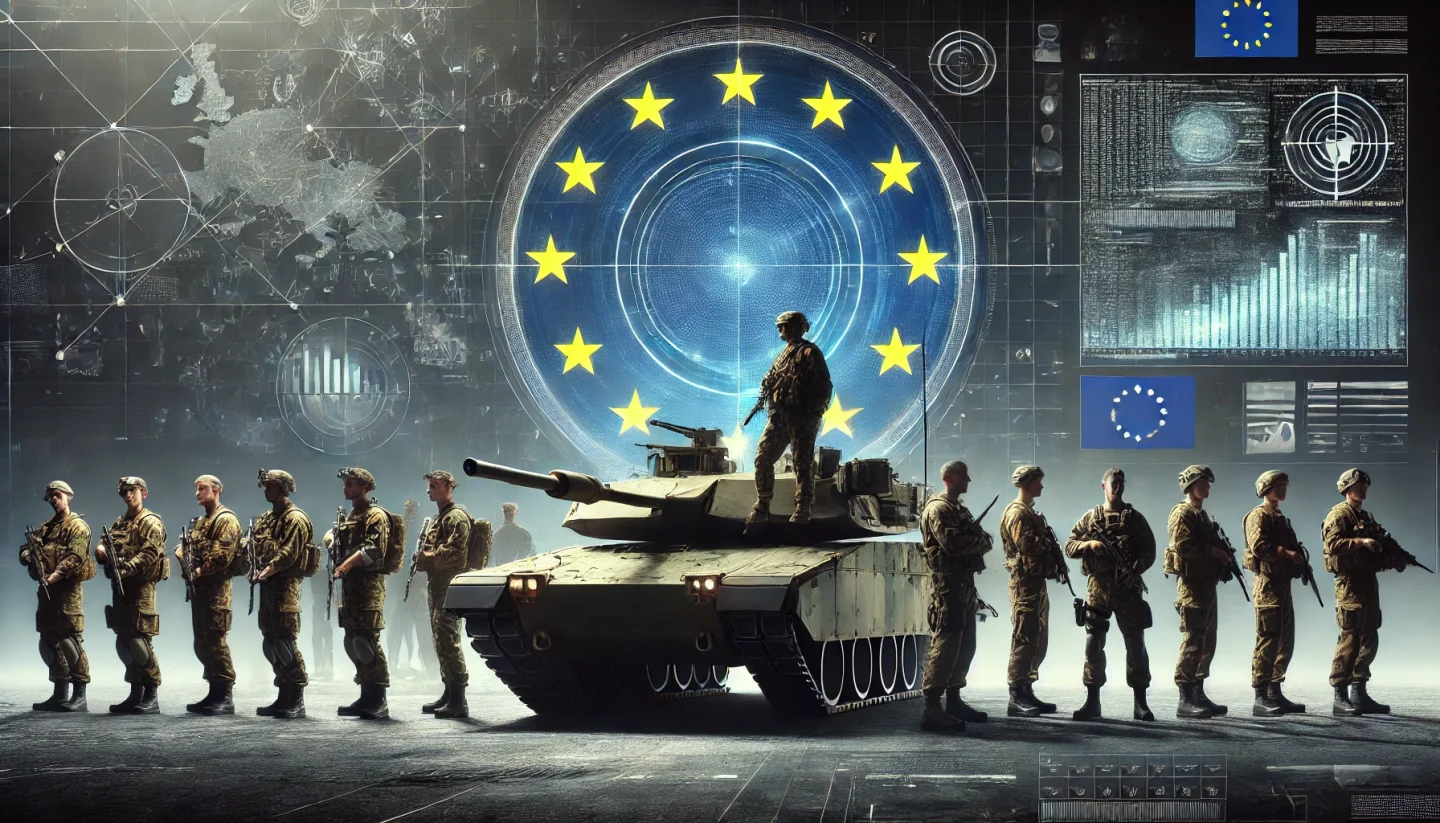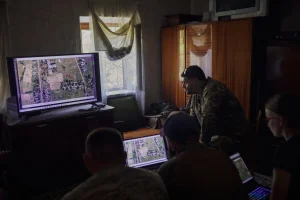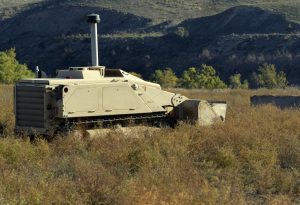Digitalization in European Land Modernization

The conflict in Ukraine and Russia’s aggression towards NATO has lit a spark for European defense, providing critical focus for countries and political blocs, including the European Union (EU). The dangerous geopolitical environment Europe now finds itself in has ushered in a new era of defense spending and a renewed focus on modernization, particularly in land systems. In this blog, we look at how Europe is now responding to its biggest existential threat for a generation and modernizing its land capabilities.
When Russia invaded Ukraine in 2022, it completely changed the threat environment for Europe. While Russia was seen as a growing belligerent power and had already shown aggressive behavior through its annexation of Crimea and parts of Eastern Ukraine in 2014, the full invasion of Ukraine was something new entirely. Russia demonstrated that it was willing to use military force illegally – and on a significant scale – to achieve its political aims.

The consequences for Europe are significant. If Putin has shown a willingness to do this with Ukraine, what is stopping him from launching similar actions across Eastern Europe and beyond? For this reason, defense and security have become critical topics in European politics as countries seek to shore up their capabilities to deter external aggression.
Spending in the region has increased significantly with a 13% rise in 2023, one of the sharpest regional rises globally, according to SIPRI. This sees a return to pre-Cold War defense spending levels, and a 30% rise since 2013. States in Eastern Europe including Poland and Lithuania and Nordic countries such as Sweden and Finland have raised spending significantly.
Key areas for funding
When the Cold War ended and the threat of state-on-state conflict diminished, many European countries took advantage of what was known as the ‘peace dividend’, a situation in which defense spending could be lowered and funneled into other priority areas, such as health, education and infrastructure.
While those other areas benefitted, this ultimately led to a ‘hallowing out’ of many defense forces, with personnel numbers shrinking and capabilities either being reduced, or completely deleted (there was even a time when European armies were considering scrapping their tanks altogether, which now looks very short sighted).
We are now in a period where land forces are looking to reverse these trends, leveraging the increases in funding they will receive. Some of the key technology areas that increased budgets will look to bolster include:
- Modernization and recapitalization of armored fighting vehicle (AFV) fleets – including main battle tanks and infantry fighting vehicles.
- Establishing or expanding Short-Range Air Defense (SHORAD) and Ground-Based Air Defense (GBAD) capabilities.
- Building up long-range artillery and rocket capabilities, including bolstering the manufacturing of ammunition.
- C4I modernization and digitization across capabilities and command structures.
In Central Europe, countries such as the Czech Republic are modernizing with the introduction of new tanks, including the potential to buy the very latest Leopard 2A8 variant from Germany, as well as CV90 MKIV IFVs from BAE Systems Hägglunds.
Digitization across the battlespace
No matter which capability program you look at in the European land domain, a common theme across each one is the increasing digitization that is required for modern combat operations.
This could be a tank with increased compute power and hi-tech sensors, or a defense-wide ‘digital backbone’ that links together various capabilities and systems for greater command and control. Modern combat operations are now synonymous with data gathering, processing, disseminating and storing, and ongoing digitization efforts will have a profound impact on the way this is achieved and what outcomes are possible.
Many European armed forces are keen to leverage the transformative power of areas such as artificial intelligence (AI), autonomous systems and other innovative technologies, which will be a driving force behind digitization. AI will have critical applications across defense, which we’ve covered before here on our blog, and this will require significant upgrades to existing computer infrastructure, particularly at the edge.

NATO, for example, has embarked on a digital transformation journey that it hopes will facilitate its Multi-Domain Operations (MDO) by 2030, with the aim of “ensuring interoperability, heightened situational awareness, and data-driven decision-making”. The alliance approved the NATO Digital Transformation Implementation Strategy last year, and it has outlined that its digital environment “requires modernization, optimization, and transformation to accommodate vast data management”.
Other NATO countries have also set out their own digital strategies, including the UK Ministry of Defence, which published its Digital Strategy for Defence paper in 2021 and outlined how data is one of the “fundamental enablers, to facilitate faster, better decisions and improved Defence outcomes.”
Digitization is particularly important for emerging land operating concepts such as manned-unmanned (also known as human-machine) teaming, where unmanned ground vehicles (UGVs) will cooperate closely with crewed systems for a variety of missions, similar to what has been described as ‘loyal wingmen’ in the air domain. This will require robust data sharing among platforms as well as advanced autonomous functionality to allow UGVs to operate in complex battlespaces without human input.
Industrial offsets
As well as prioritizing modernization, another key priority for many European nations is strengthening the domestic industrial base to be able to manufacture and sustain defense equipment, rather than relying solely on foreign entities. This is borne out of a desire for greater operational independence and a resilient industrial base is central to that.
The EU and individual countries in Europe have prioritized the development of defense industrial strategies, which have outlined how they will build a strong supply base that can address existential threats. The EU has set out objectives for member states, including that 50% of defense procurement funds should be devoted to the European Defence Technological and Industrial Base (EDTIB) by 2030, increasing to 60% by 2035.
There are several examples of how European countries are shifting towards an offset strategy, including the aforementioned CV90 deal with the Czech Republic. This will be delivered in partnership with Czech industry, and many other programs in the region are also delivered with local companies key to their manufacture, assembly and support.
Another example is the Hungarian Army’s acquisition of the German Lynx IFV, which is being manufactured at a dedicated production site in Zalaegerszeg, in the west of the country.
The Systel advantage
Systel is closely involved in many armed forces modernization programs, and especially efforts to increase digitization across the defense space with its highly-rugged computers.
Systel’s edge computing solutions perfectly suit European modernization initiatives and programs, providing land forces with significant compute power – including leveraging NVIDIA’s Jetson embedded processors – in a small form factor. This allows armed forces to deploy innovative technologies such as AI and advanced autonomy on a range of platforms and across a number of applications, ultimately giving them operational advantage against peer threats.
We are also open to working with European partners to strengthen local participation in our innovative rugged computer technology, satisfying the demands for increased domestic involvement for critical technologies in the defense space and building resilient supply chains.
Our solutions are also ITAR-free, so can be easily exported to support European partners without the limits of the regulation.
We have previously delivered to many partners on the continent to support their rugged computing requirements, and are well placed to do this again to help European partners counter the current real and active threat they are now facing.
Let's Talk
Have questions or want to learn more? Contact our team and let’s talk!